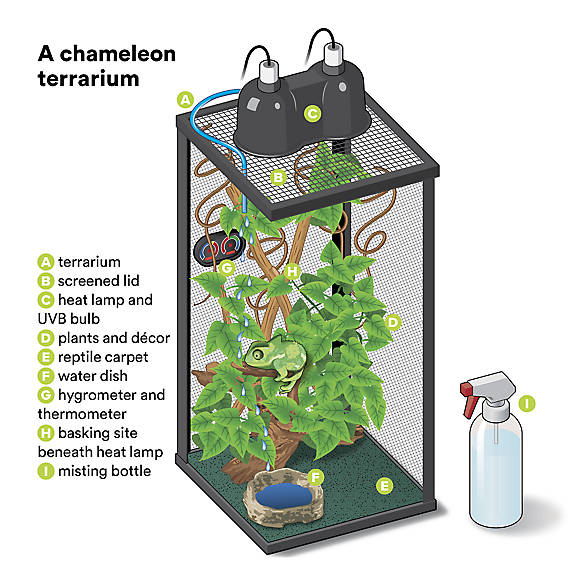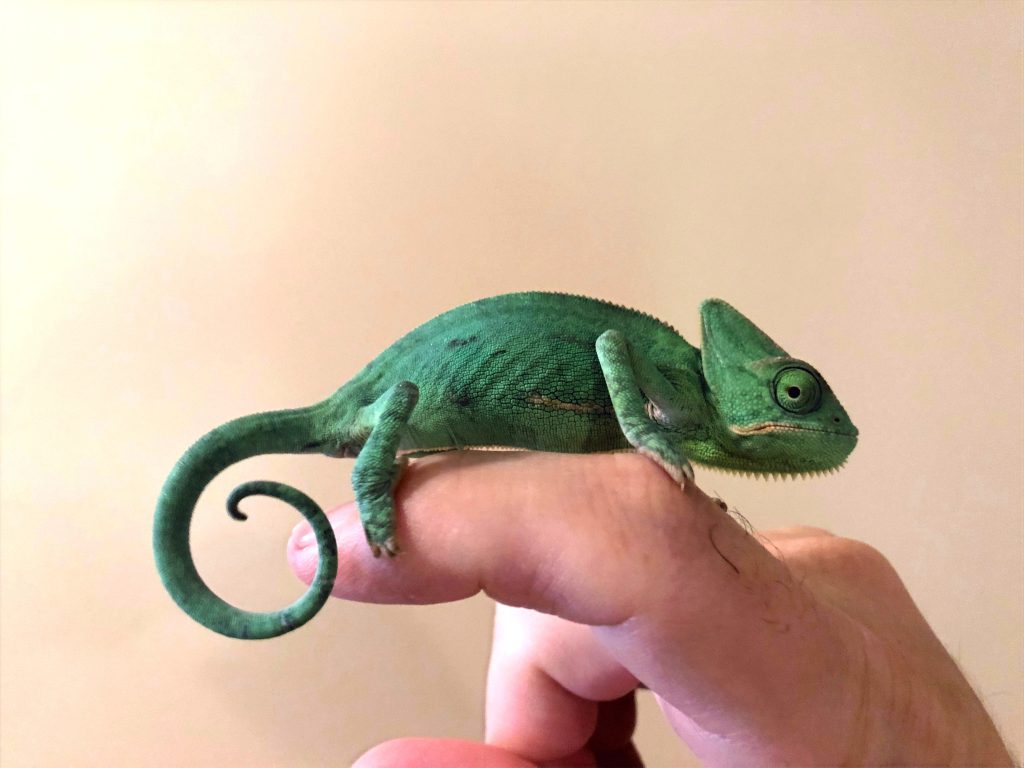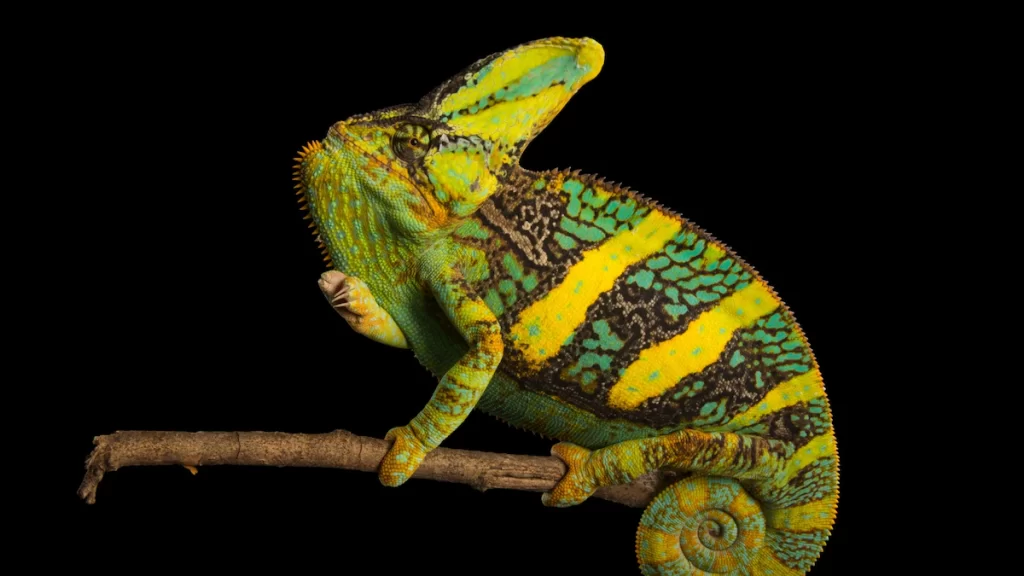By Conner Tighe
The following article is a mix of expert opinion and personal experience. Not every Veiled Chameleon will show the same characteristics, and this is merely general information.
The curious Veiled Chameleon is a pet opportunity of wonder. Recognized by their helmet-like structures, “casques,” Veiled Chameleons are perhaps one of the most recognized chameleon species, yet are one of the most difficult pets to care for.
The opposing toes and 360-degree eyes entice many, but should bring question as to whether it’s best to care for or not.
Colors galore
The natural colors of the Veiled Chameleon range in brown, yellow, and green, typically a mix of the three. One characteristic that makes chameleons stand out is their ability to shift colors when threatened.
Camouflage is a chameleon’s greatest weapon besides their spring-like tongues. What many may not know is that chameleons also shift colors based on their mood. The camouflage effect comes from microscopic crystals within the skin that react to light as the chameleon tenses and relaxes its body.
- Black/dark brown: The chameleon feels threatened ( a warning sign)
- Bright green/blue: The chameleon is content and happy
Enclosure

Mesh enclosures should be the only option pet owners use when adopting chameleons for a couple of reasons. Glass tanks and aquariums provide little to no air ventilation, as mesh will.
Their habitats should always be vertical as chameleons are climbers and will naturally climb up jungle-like structures to “tan” underneath a heat lamp. A cage size of 36 inches by 24 inches is sufficient.
Artificial plants can be used but remain cautious as chameleons typically chew and feed on surrounding greenery. Pothos, hibiscus, and dracaena are safe to use. Pet stores sell fake vine structures for mesh enclosures, which allows the pet owner to get creative with the tank setup.
Vines and other climbing opportunities should remain secure and fastened to enclosures as a fall could injure the chameleon.
What separates chameleon care from your typical reptile pet is their need for constant heat and moisture. Temperatures between 72 and 80 degrees are ideal and regular misting is encouraged.
Unlike most reptiles, chameleons don’t drink from a natural water source. They obtain moisture from natural misting or water droplets from nearby leaves. Their horn-like structures are used specifically for this purpose.
UVA/UVB lighting is also essential for a healthy chameleon as they are commonly found basking in surrounding heat. Always provide a shade source when they’re ready to get cooled off.
Diet
Chameleons eat insects like crickets, grasshoppers, locusts, and roaches. Baby chameleons should be fed around 10 insects daily, while adult chameleons should be fed around five insects every two days. Owners can suspend a cup full of insects attached to the cage or can feed the chameleon with tongs or by hand.
Their tongues act as a suction cup of sorts since chameleons are slow-moving creatures. The tongue will shoot out, grabbing their prey and retracting it back into their mouth.
Handling/cleaning

Chameleons are easily stressed reptiles and are easily susceptible to diseases because of this. It’s best to handle chameleons as little as possible. They are naturally aggressive toward other chameleons and are best housed individually. However, they tend to remain peaceful toward their owners.
Mold and bacteria growth is likely to occur because of regular misting and humid conditions. This is why it’s best to clean their enclosures regularly. Line the bottom of the enclosure using either newspaper or paper towels and then sprinkle a dirt mixture on top. This method makes the cleaning easier.
Sources: The Spruce Pets (Pet Care), The Spruce Pets (Color Changes), San Diego Zoo, Chameleon School
Images: PetSmart, Mark’s Chameleons
Featured Image: National Geographic

